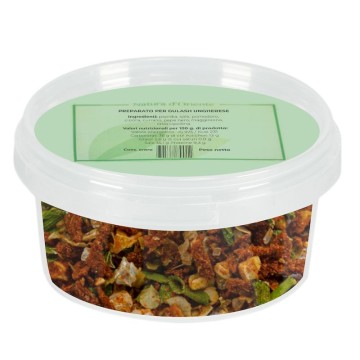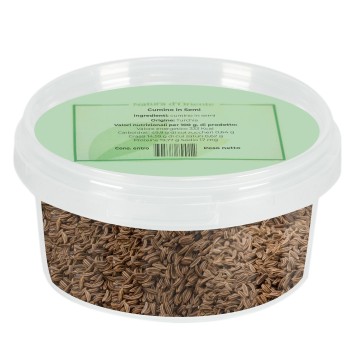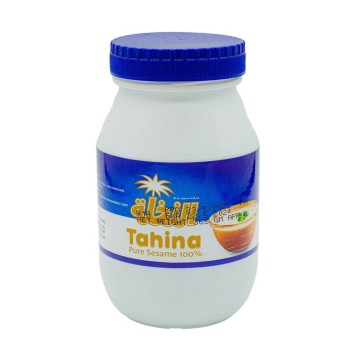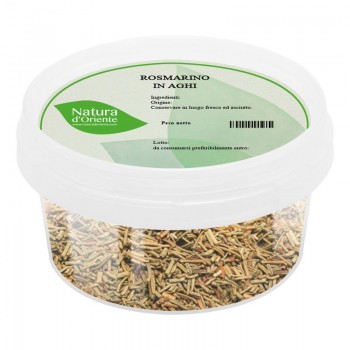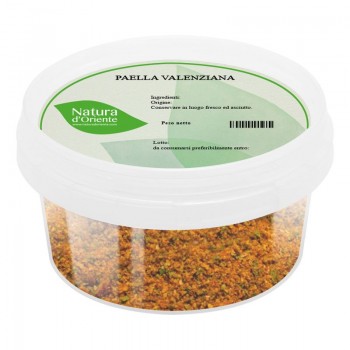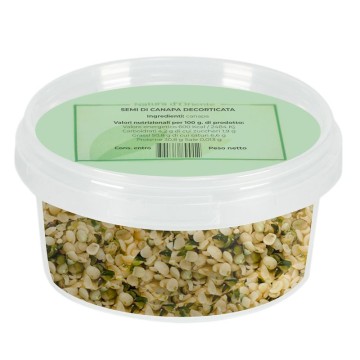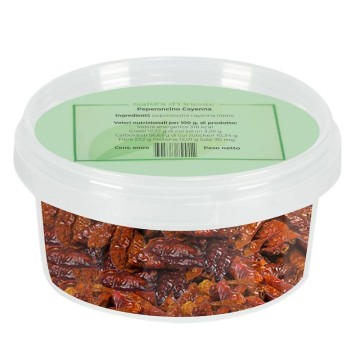Traditional French Provençal cuisine is the inspiration for this blend of herbs, designed to flavor typical dishes such as fresh meats, cheeses, eggs and vegetables.
For these local dishes, chefs often use herbes de Provence, with a warm and deliciously spicy taste, with a pronounced herbaceous note. A versatile condiment, very popular for decades in French Mediterranean cuisine and, now, internationally.
The aromatic plants that make up this blend immediately harmonize on the table of all those who love Mediterranean cuisine. Aromatic herbs can be successfully used for grilling, sauces, stuffed tomatoes, marinades or salads.
The mix combines dried Provençal herbs and spices, adding a unique touch thanks to the presence of lavender. A special note, typically Provençal, which distinguishes it from many other condiments. This herb blend also differs from the French "fines herbes", for seasoning dishes with short cooking times, while herbes de Provence are a universal seasoning for a variety of dishes. This combination contains all the active ingredients of the herbs and spices that compose it. For this reason, Herbs de Provence represent an emblem of the gastronomic heritage of the South of France, and also provide beneficial qualities for our body.
What are the aromatic herbs of Provence?
In our combination we use different aromas, which are part of the Provençal tradition.
Rosemary introduces a typical Mediterranean taste, slightly bitter and herbaceous, which pairs well with the strong or fatty flavors of meat, such as beef and roasts.
The laurel or laurel gives a strong scent and a bitterish note in the taste, more delicate and nuanced in the dried version.
Marjoram gives a pungent and slightly bitter flavour, an intense and fresh herbaceous scent, which is released at the end of cooking with persistent notes.
The intensely flavored oregano spreads its aroma both raw and cooked, enhancing the intense aromas and livening up the neutral aromas of the dishes.
Basil evokes sweet and peppery notes on the palate, evoking anise with fresh aromatic nuances, perfect on meat and fish.
The savory gives a pungent and intense flavour, reminiscent of thyme; excellent when paired with vegetables, legumes and soups.
Lavender is reminiscent of rosemary in taste, with a delicate and floral note, and an aroma that pairs perfectly with cheeses and creams.
Using the Erbe de Provence blend in cooking
This combination of aromas, an essential component of French and Mediterranean cuisine, adds a particular, intense and warm flavor to land and sea dishes. The ready-to-use version of Erbe de Provence is convenient for immediately flavoring and seasoning dishes, both cold and hot.
You can adjust the quantities according to personal taste, remembering that these fragrant ingredients are excellent at the end of cooking or in the last 5 minutes. They should not be subjected to too high temperatures. Otherwise, Provençal herbs can be added first to olive oil, butter or other marinating ingredients. Provençal herbs are also often used to flavor various fried foods, by inserting the herbs into the frying oil.
Meat and fish: the ready-made mixture is traditionally used as a garnish on dishes such as roast chicken, roast lamb, grilled fish. Alternatively, you can season your meat or fish before grilling, searing or roasting. It is customary to put the seasoning in cooking oil to flavour: cover meat or fish in olive oil and season with salt and Herbs de Provence. The mixture becomes useful for marinating meat or fish. You can also sprinkle the mixture on the grill (a pinch on the hot coals, to infuse flavor into the smoke). The recipe for Sisteron lamb is famous, known for its fine and tender meat; grilled or baked, it is marinated with Herbs de Provence, garlic, lemon juice and apple cider vinegar.
Savory recipes: great combination for flavoring roasted vegetables, salads, tomato-based soups, stuffed tomatoes, potatoes and stews such as ratatouille. Get intoxicating aromas by adding Herbes de Provence to stews, soups, legumes, rice and cold rice salads.
Sauces and condiments: Provençal herbs give an even more Mediterranean flavor to all sauces, creams and condiments. Mixed with fennel, the mixture is excellent for grilled fish.
Breaded turkey with herbs of Provence
Ingredients: 500 g turkey breast – flour – 1 egg - herbs of Provence - 1 glass of dry white wine - extra virgin olive oil - breadcrumbs - salt and pepper.
Preparation: Bread the turkey with a double batter to obtain a crispier crust. Use the flour in two different containers and a shallow plate with the beaten egg. Dredge the turkey breast in the flour, dip it in the egg and then in the second plate of flour – to completely coat the meat. Place the turkey breast in the pan and brown with a little oil. Deglaze with wine. Salt, pepper and at the end of cooking add the herbs of Provence. Alternatively, you can add a teaspoon of Provence herbs to the batter.
Origin of the aromatic blend
The Provençal herb condiment clearly originates from this south-eastern region of France. Initially the term Erbe de Provence described the mixture of herbs grown locally during the summer, abundant and used in everyday cooking. Since the 1960s, the popularity of this condiment increased and was disseminated through various recipe books. It was Julia Child who mentioned it in the recipe for Poulet Sauté aux Herbes de Provence (sauté polo with Herbs de Provence) in the cookbook The Art of French Cuisine. She defined the blend, adding it to the culinary lexicon of chefs around the world. During the 1970s, a French brand began packaging and selling the herbes de Provence spice blend internationally. Since then, they have been highly appreciated in vegetable dishes, stews and barbecues, recognized for their unique aroma and spicy taste to foods. Sometimes the classic blend also contains lavender, an aromatic herb typical of Provence, which belongs to the Lamiaceae family - like most of the aromatic herbs in this mix. In general, the herbs included in the mixture come from Provence and their dosage can change depending on the manufacturer. Our version includes the most traditional ones, such as lavender, marjoram, basil, bay leaf, savory, oregano and rosemary.









 No reward points for this product.
No reward points for this product.

